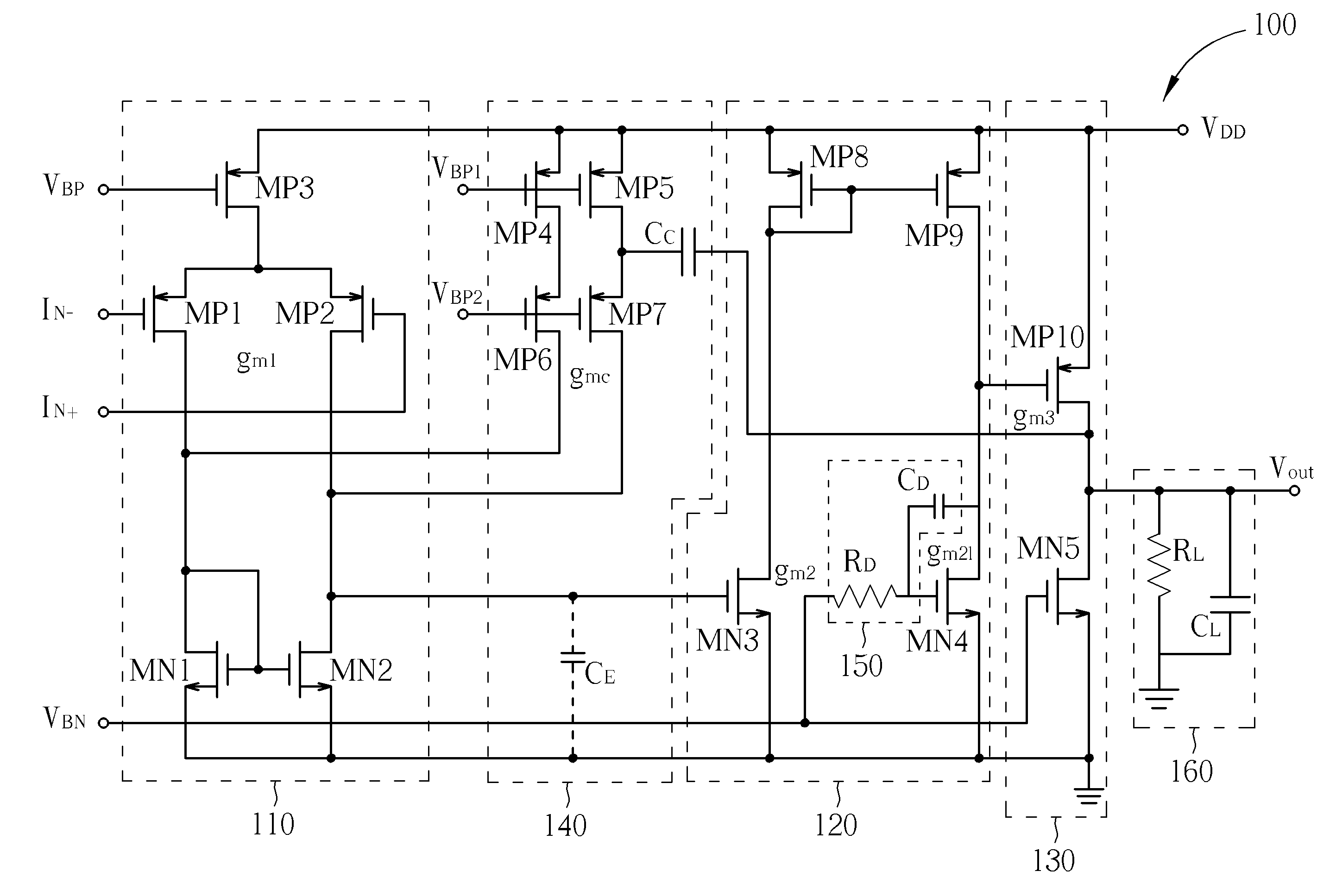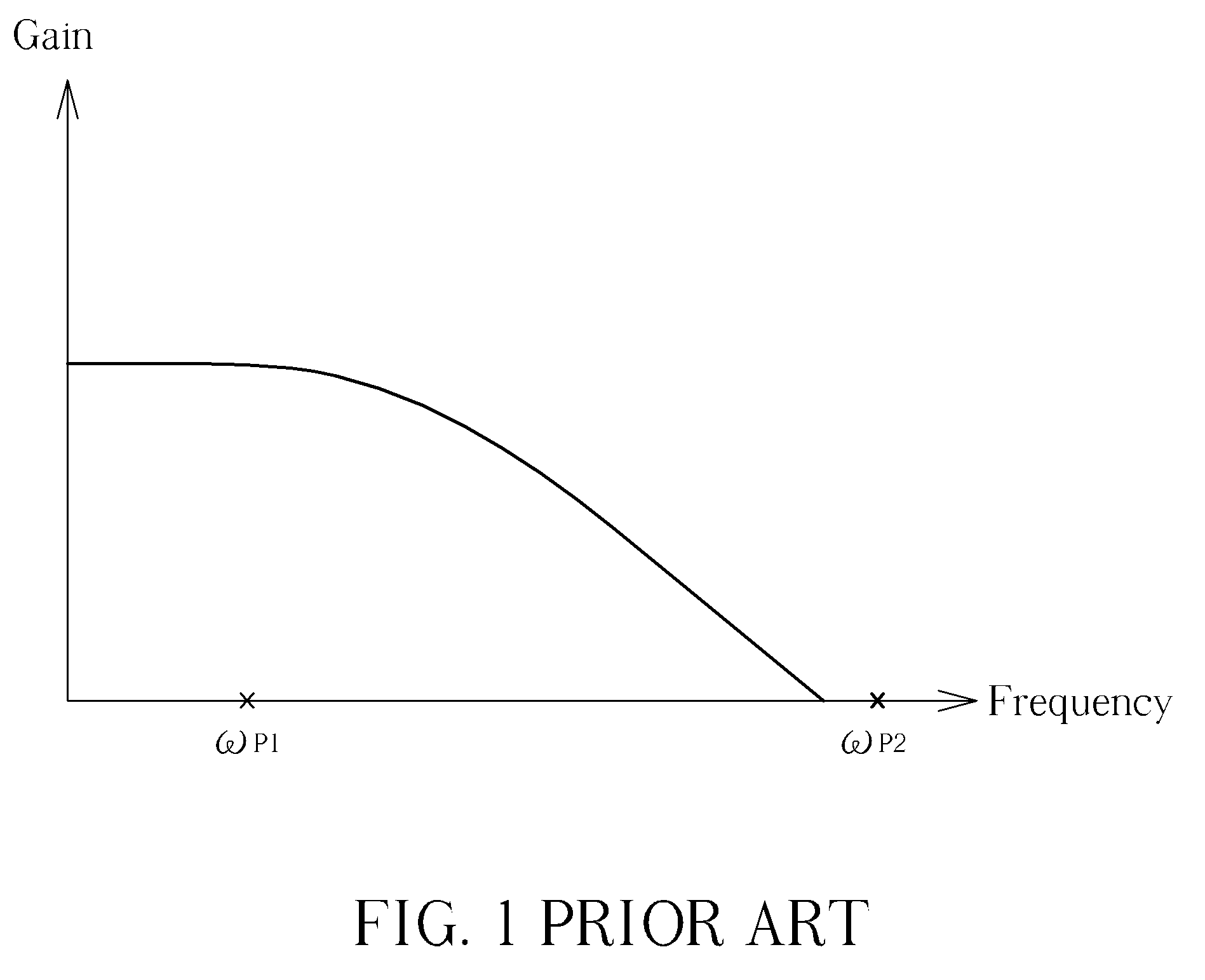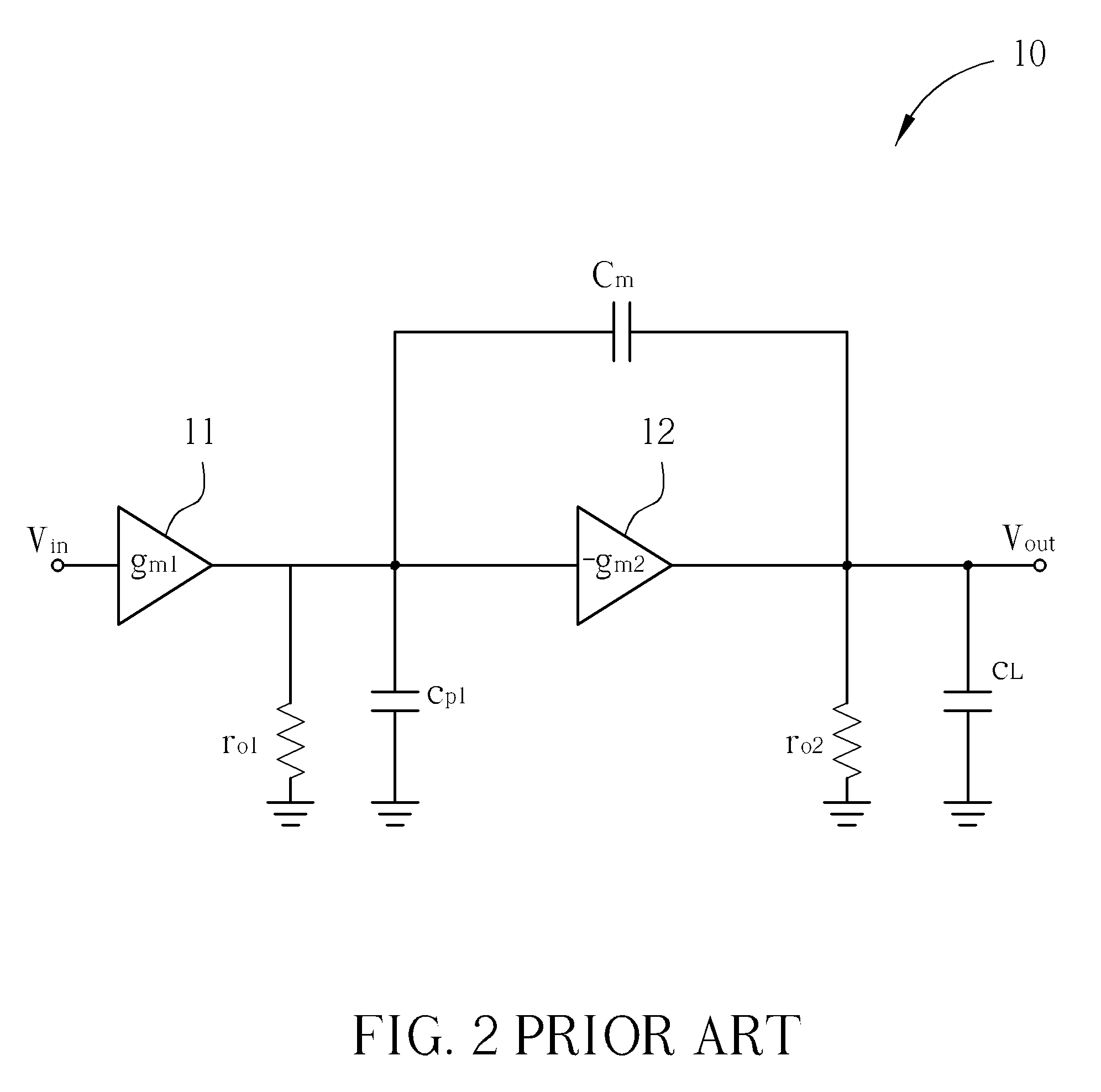Three-stage frequency-compensated operational amplifier for driving large capacitive loads
a capacitive load, three-stage technology, applied in the direction of amplifiers, amplifiers with semiconductor devices/discharge tubes, electric devices, etc., can solve the problems of poor power supply rejection ratio (psrr) of mc amplifiers during high frequency operations, insufficient two-stage mc amplifiers for desirable operation, and all multi-stage amplifiers suffer close-loop stability problems. , to achieve the effect of low impedan
- Summary
- Abstract
- Description
- Claims
- Application Information
AI Technical Summary
Benefits of technology
Problems solved by technology
Method used
Image
Examples
first embodiment
[0041]Reference is made to FIG. 6 for a diagram of a three-stage operational amplifier 100 according to the present invention. In the operational amplifier 100, the first stage circuit 110 includes transistors MP1-MP3, MN1 and MN2. The second stage circuit 120 includes transistors MP8, MP9, MN3 and MN4. The third stage circuit 130 includes transistors MP10 and MN5. The Ahuja compensation circuit 140 includes transistors MP4-MP7 and compensation capacitors CC and CE. VDD, VBP, VBN, VBP1, and VBN2 are bias voltages for operating the operational amplifier 100. Meanwhile, the transconductance of the first stage circuit 110 contributed by the transistors MP1 and MP2 is represented by gm1; the transconductance of the second stage circuit 120 contributed by the transistor MN3 is represented by gm2; the transconductance of the second stage circuit 120 contributed by the transistor MN4 is represented by gm21; the transconductance of the third stage circuit 130 contributed by the transistor M...
second embodiment
[0061]The class AB configuration is sometimes referred to as a “push-pull” configuration since a first branch of the output stage “pushes” or sources currents to a load while a second branch of the output stage “pulls” or sinks current from the load. Class-AB amplifiers can reduce high power consumption of a class-A amplifier by always having one output branch substantially turned off when the other output branch is turned on. Although the current in one leg of a class AB amplifier is substantially turned off there is a small amount of current flowing in that leg. The small residual current in the class AB amplifier avoids the crossover distortion produced the turning on and off of the currents in class-B amplifiers. By employing the class AB output stage scheme, the operational amplifier 200 according to the present invention can achieve better power efficiency while driving heavy resistive loads.
[0062]Please refer to FIG. 9 for a diagram of a three-stage operational amplifier 400 ...
fourth embodiment
[0068]Similarly, for the present invention depicted in FIG. 9, the PSRRVDD4 and PSRRGND4 of the second stage circuit 124 in isolation can be represented by:
[0069]PSRRVDD4=(ro8-ro9)ro5A2(ro5+ro9)ro8(10)PSRRGND4=(ro8+r59)ro9A2(ro5+ro9)ro8(11)
[0070]where ro8 is the small signal drain resistance of the transistor MP8;
[0071]ro9 is the small signal drain resistance of the transistor MP9;
[0072]ro5 is the small signal drain resistance of the transistors MN8 and MN9 coupled in parallel; and
[0073]A2 is the DC gain of the second stage circuit 124
[0074]From (8) and (10), the second stage circuit 124 can have a better (lower) VDD-PSRR since the numerator of PSRRVDD4 can be adjusted to zero, which happens when the disturbance current transmitted through the transistor MP9 (after being mirrored and phase-inverted by the transistor MN7) matches the disturbance current transmitted through the transistor MP8 (after being mirrored and phase-inverted by the transistor MN...
PUM
 Login to View More
Login to View More Abstract
Description
Claims
Application Information
 Login to View More
Login to View More - R&D
- Intellectual Property
- Life Sciences
- Materials
- Tech Scout
- Unparalleled Data Quality
- Higher Quality Content
- 60% Fewer Hallucinations
Browse by: Latest US Patents, China's latest patents, Technical Efficacy Thesaurus, Application Domain, Technology Topic, Popular Technical Reports.
© 2025 PatSnap. All rights reserved.Legal|Privacy policy|Modern Slavery Act Transparency Statement|Sitemap|About US| Contact US: help@patsnap.com



